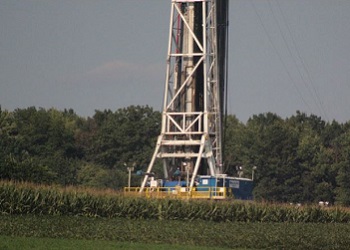
WASHINGTON, DC, August 19, 2105 (ENS) – New standards to reduce emissions of the greenhouse gas methane, volatile organic compounds and air toxics from the oil and gas industry were issued by the U.S. Environmental Protection Agency on Tuesday.
The proposal is a part of the administration’s strategy under President Barack Obama’s Climate Action Plan to cut methane emissions from the oil and gas sector by 40 to 45 percent from 2012 levels by 2025.

But the American Petroleum Institute, an industry group, says the new standards are “duplicative, costly, and undermine America’s competitiveness.”
Methane, the key constituent of natural gas, is a potent greenhouse gas with a global warming potential more than 25 times greater than that of carbon dioxide.
Methane is the second most prevalent greenhouse gas emitted in the United States from human activities, and nearly 30 percent of those emissions come from oil production and the production, transmission and distribution of natural gas, according to the EPA.
“Today, through our cost-effective proposed standards, we are underscoring our commitment to reducing the pollution fueling climate change and protecting public health while supporting responsible energy development, transparency and accountability,” said EPA Administrator Gina McCarthy.
To cut methane and VOC emissions, the proposal requires:
• Finding and repairing leaks;
• Capturing natural gas from the completion of hydraulically fractured oil wells;
• Limiting emissions from new and modified pneumatic pumps; and
• Limiting emissions from several types of equipment used at natural gas transmission compressor stations, including compressors and pneumatic controllers.
American Petroleum Institute President and CEO Jack Gerard said Tuesday that the agency’s proposal for additional methane regulations on oil and gas wells and transmission are not necessary because the industry has already reduced its methane emissions through innovation and existing regulations.
“The oil and gas industry is leading the charge in reducing methane,” Gerard said. “The last thing we need is more duplicative and costly regulation that could increase the cost of energy for Americans. Even as oil and natural gas production has surged, methane emissions from hydraulically fractured natural gas wells have fallen nearly 79 percent since 2005, and CO2 emissions are down to 27-year lows. This is due to industry leadership and significant investments in new technologies.”
EPA’s own analysis shows that methane emissions from hydraulically fractured natural gas wells are down. Total methane emissions from natural gas systems are down 11 percent since 2005 – a direct result of industry innovation at the same time production has increased significantly, according to Gerard.
“Cleaner-burning energy sources like natural gas are key compliance options for our Clean Power Plan,” argued McCarthy, “and we are committed to ensuring safe and responsible production that supports a robust clean energy economy.”
The proposed standards for new and modified sources are expected to reduce 340,000 to 400,000 short tons of methane in 2025, the equivalent of reducing 7.7 to 9 million metric tons of carbon dioxide, the most prevalent greenhouse gas.
EPA estimates the rule will yield net climate benefits of $120 to $150 million in 2025.
Those standards are also expected to reduce 170,000 to 180,000 tons of ozone-forming VOCs in 2025, along with 1,900 to 2,500 tons of air toxics, such as benzene, toluene, ethylbenzene and xylene.
Ozone is linked to reduced lung function, asthma attacks, asthma development, emergency room visits and hospital admissions, and early death from respiratory and cardiovascular causes.
Air toxics include chemicals that are known or suspected to cause cancer and other serious health effects.
The proposed standards will complement voluntary efforts, including EPA’s Methane Challenge Program, and are based on practices and technology currently used by industry.
EPA’s Methane Challenge Program that was proposed earlier this year expands on the successful Natural Gas STAR program, which serves as a platform for companies who want to make an ambitious and transparent commitments to address methane emissions. This flexible program has the potential to foster significant cost-effective emission reductions across the oil and gas sector and to provide transparency on the progress partner companies are making to reduce emissions.
As part of the proposal announced today, the agency is updating the 2012 New Source Performance Standards (NSPS) to address methane as well as VOC emissions for sources covered in that rule.
EPA’s proposal would also require that industry reduce VOC and methane emissions from hydraulically fractured and refractured oil wells, which can contain significant amounts of natural gas along with oil.
In addition, the proposal means methane and VOC reductions “downstream” from wells and production sites, covering equipment in the natural gas transmission segment of the industry that was not regulated in the agency’s 2012 oil and natural gas rules.
Additionally, the agency proposes to clarify and streamline Clean Air Act permitting requirements in states and Indian country.
Today’s proposal includes proposed guidelines for states to reduce VOC emissions from existing oil and gas sources in certain ozone nonattainment areas as well as mid-Atlantic and Northeast states that are part of the Ozone Transport Region.
EPA will take comment on the proposals for 60 days after they are published in the Federal Register. The agency will hold public hearings and will announce details soon.
More information, including technical fact sheets, is available here.
Copyright Environment News Service (ENS) 2015. All rights reserved.
